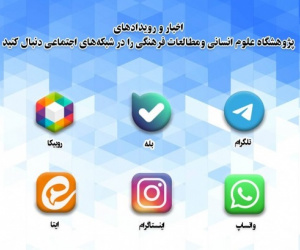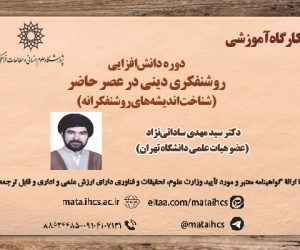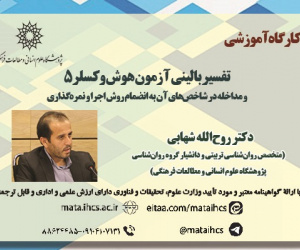مطالعه رابطه بین کیفیت آموزش الکترونیک و پریشانی روان شناختی دانشجویان دانشگاه شاهد تهران
آرشیو
چکیده
هدف: این مطالعه به بررسی رابطه بین کیفیت آموزش الکترونیکی و پریشانی روان شناختی در دانشجویان می پردازد. روش پژوهش: روش تحقیق حاضر کمی می باشد و ابزار گردآوری اطلاعات پرسشنامه است. جامعه آماری پژوهش حاضر شامل کلیه دانشجویان دانشگاه شاهد است که تعداد آنها 6852 بوده و حجم نمونه با استفاده از فرمول کوکران 610 نفر تعیین گردید. یافته ها: یافته های پژوهش حاضر نشان داد که بین سهولت دسترسی در فضای مجازی و پریشانی روان شناختی رابطه منفی و معنی داری وجود دارد و شدت رابطه در حد متوسط می باشد (426/0-)، بین زیر ساخت های یادگیری الکترونیکی و پریشانی روان شناختی رابطه منفی و معنی داری وجود دارد و شدت رابطه در حد (302/0-) بوده است، بین تعاملات در فضای مجازی و پریشانی روان شناختی هم رابطه منفی و معنی داری وجود داشته است و شدت رابطه در حد متوسط بوده است (399/0-)، بین کیفیت محتوای مطالب ارائه شده در فضای مجازی و پریشانی روان شناختی هم رابطه مثبت و معنی داری وجود داشته و شدت رابطه در حد متوسط بوده است (423/0-) براساس نتایج بین کیفیت آموزش الکترونیک و پریشانی روان شناختی دانشجویان رابطه منفی و معنی داری داشته است (447/0-). نتیجه گیری: دانشجویانی که آمادگی کمتری برای یادگیری آنلاین داشتند، تنش های روانشناختی بیشتری در حین یادگیری الکترونیکی را تجربه کردند. یافته های پژوهش بر ضرورت توانمند سازی دانشجویان برای یادگیری آنلاین، غربالگری اختلالات روانشناختی و تامین منابع حمایت های و مشاوره ای جهت ارتقاء سلامت روانی دانشجویان تاکید می نماید.Study on the Relationship Between the Quality of E-Learning and Psychological Distress Among Students at Shahed University, Tehran
Objective: The study investigates the relationship between the quality of e-learning and psychological distress among university students.
Methods: The current research is quantitative in nature, utilizing a questionnaire as the data collection tool. The population of this study includes all students at Shahed University, totaling 6852, with a sample size of 610 determined using the Cochran formula.
Results: The findings of this research indicate that there is a significant negative relationship between ease of access in the virtual space and psychological distress, with a moderate level of correlation (-0.426). There is also a significant negative relationship between e-learning infrastructures and psychological distress, with a correlation level of (-0.302). Moreover, interactions in the virtual space show a significant negative relationship with psychological distress, with a moderate correlation level (-0.399). Additionally, the quality of content presented in the virtual space is positively and significantly related to psychological distress, with a moderate correlation level (0.423). Based on the results, the quality of e-learning has a negative and significant impact on students' psychological distress.
Conclusion: Students with less readiness for online learning experienced higher psychological tensions during e-learning. The research findings emphasize the necessity of empowering students for online learning, screening psychological disorders, and providing supportive resources and counseling services to enhance students' mental health.







